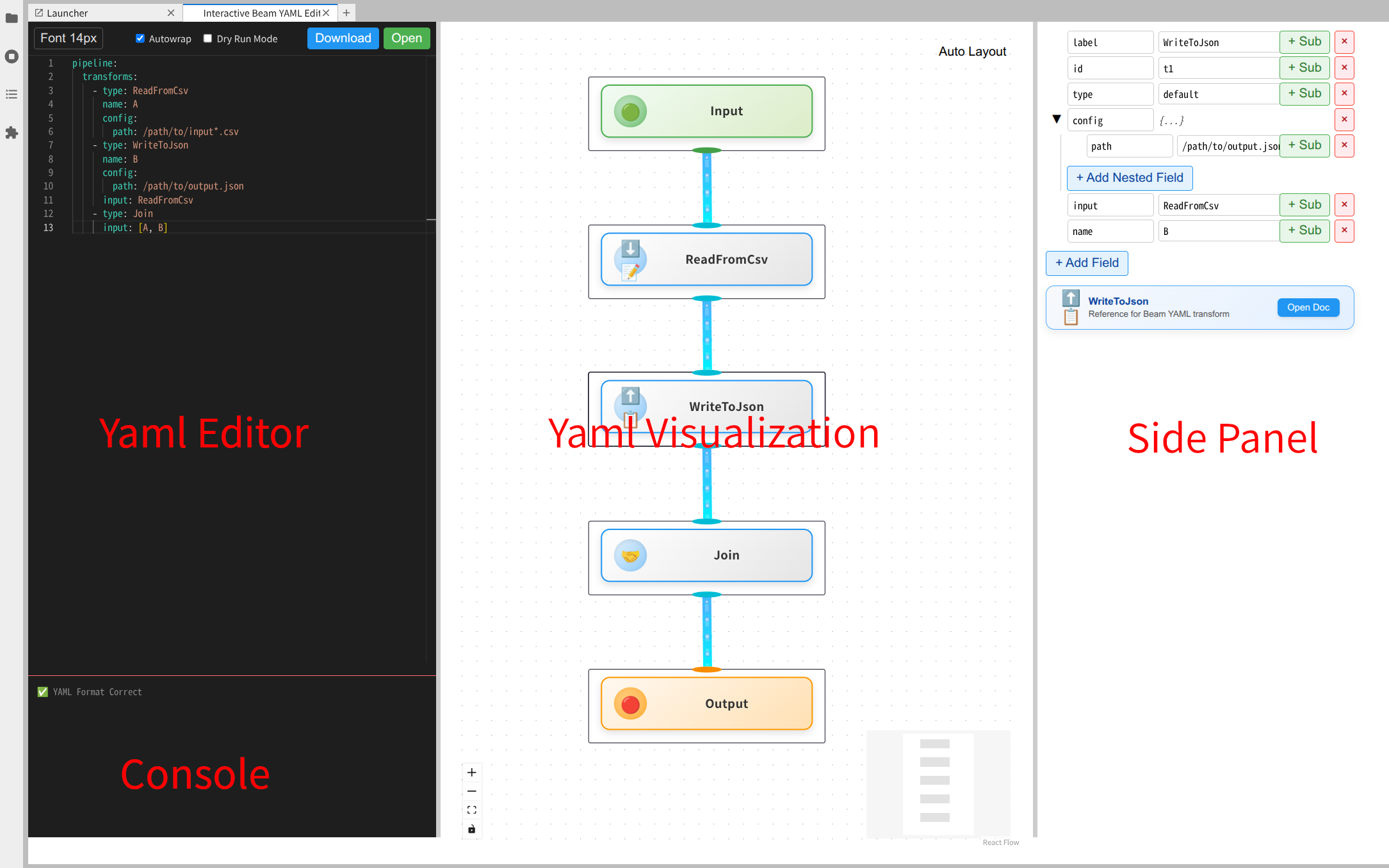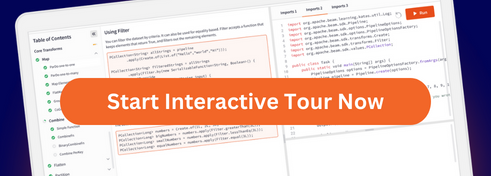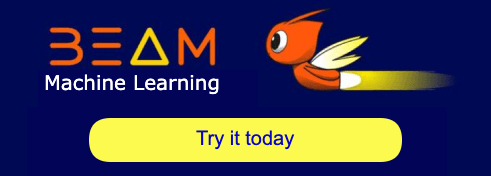blog & gsoc
2025/10/14
Google Summer of Code 2025 - Enhanced Interactive Pipeline Development Environment for JupyterLabCanyu Chen
GSoC 2025 Basic Information
Student: [Canyu Chen] (@Chenzo1001) Mentors: [XQ Hu] (@liferoad) Organization: [Apache Beam] Proposal Link: Here
Project Overview
BeamVision significantly enhances the Apache Beam development experience within JupyterLab by providing a unified, visual interface for pipeline inspection and analysis. This project successfully delivered a production-ready JupyterLab extension that replaces fragmented workflows with an integrated workspace, featuring a dynamic side panel for pipeline visualization and a multi-tab interface for comparative workflow analysis.
Core Achievements:
Modernized Extension: Upgraded the JupyterLab Sidepanel to v4.x, ensuring compatibility with the latest ecosystem and releasing the package on both NPM and PyPI.
YAML Visualization Suite: Implemented a powerful visual editor for Beam YAML, combining a code editor, an interactive flow chart (built with @xyflow/react-flow), and a collapsible key-value panel for intuitive pipeline design.
Enhanced Accessibility & Stability: Added pip installation support and fixed critical bugs in Interactive Beam, improving stability and user onboarding.
Community Engagement: Active participation in the Beam community, including contributing to a hackathon project and successfully integrating all work into the Apache Beam codebase via merged Pull Requests.
Development Workflow
As early as the beginning of March, I saw Apache’s project information on the official GSoC website and came across Beam among the projects released by Apache. Since I have some interest in front-end development and wanted to truly integrate into the open-source community for development work, I contacted mentor XQ Hu via email and received positive feedback from him. In April, XQ Hu posted notes for all GSoC students on the Beam Mailing List. It was essential to keep an eye on the Mailing List promptly. Between March and May, besides completing the project proposal and preparation work, I also used my spare time to partially migrate the Beam JupyterLab Extension to version 4.0. This helped me get into the development state more quickly.
I also participated in the Beam Hackathon held in May. There were several topics to choose from, and I opted for the free topic. This allowed me to implement any innovative work on Beam. I combined Beam and GCP to create an Automatic Emotion Analysis Tool for comments. This tool integrates Beam Pipeline, Flink, Docker, and GCP to collect and perform sentiment analysis on real-time comment stream data, storing the results in GCP’s BigQuery. This is a highly meaningful task because sentiment analysis of comments can help businesses better understand users’ opinions about their products, thereby improving the products more effectively. However, the time during the Hackathon was too tight, so I haven’t fully completed this project yet, and it can be further improved later. This Hackathon gave me a deeper understanding of Beam and GCP, and also enhanced my knowledge of the development of the Beam JupyterLab Extension.
In June, I officially started the project development and maintained close communication with my mentor to ensure the project progressed smoothly. XQ Hu and I held a half-hour weekly meeting every Monday on Google Meet, primarily to address issues encountered during the previous week’s development and to discuss the tasks for the upcoming week. XQ Hu is an excellent mentor, and I had no communication barriers with him whatsoever. He is also very understanding; sometimes, when I needed to postpone some development tasks due to personal reasons, he was always supportive and gave me ample freedom. During this month, I improved the plugin to make it fully compatible with JupyterLab 4.0.
In July and August, I made some modifications to the plugin’s source code structure and published it on PyPI to facilitate user installation and promote the plugin. During this period, I also fixed several bugs. Afterwards, I began developing a new feature: the YAML visual editor (design doc HERE). This feature is particularly meaningful because Beam’s Pipeline is described through YAML files, and a visual editor for YAML files can significantly improve developers’ efficiency. In July, I published the proposal for the YAML visual editor and, after gathering feedback from the community for some time, started working on its development. Initially, I planned to use native Cytoscape to build the plugin from scratch, but the workload was too heavy, and there were many mature flow chart plugins in the open-source community that could be referenced. Therefore, I chose XYFlow as the component for flow visualization and integrated it into the plugin. In August, I further optimized the YAML visual editor and fixed some bugs.

In September, I completed the project submission, passed Google’s review, and successfully concluded the project.
Development Conclusion
Overall, collaborating with Apache Beam’s developers was a very enjoyable process. I learned a lot about Beam, and since I am a student engaged in high-performance geographic computing research, Beam may play a significant role in my future studies and work.
I am excited to remain an active member of the Beam community. I hope to continue contributing to its development, applying what I have learned to both my academic pursuits and future collaborative projects. The experience has strengthened my commitment to open-source innovation and has set a strong foundation for ongoing participation in Apache Beam and related technologies.
Special Thanks
I would like to express my sincere gratitude to my mentor XQ Hu for his guidance and support throughout the project. Without his help, I would not have been able to complete this project successfully. His professionalism, patience, and passion have been truly inspiring. As a Google employee, he consistently dedicated time each week to the open-source community and willingly assisted students like me. His selfless dedication to open source is something I deeply admire and strive to emulate. He is also an exceptionally devoted teacher who not only imparted technical knowledge but also taught me how to communicate more effectively, handle interpersonal relationships, and collaborate better in a team setting. He always patiently addressed my questions and provided invaluable advice. I am immensely grateful to him and hope to have the opportunity to work with him again in the future.
I also want to thank the Apache Beam community for their valuable feedback and suggestions, which have greatly contributed to the improvement of the plugin. I feel incredibly fortunate that we, as a society, have open-source communities where individuals contribute their intellect and time to drive collective technological progress and innovation. These communities provide students like me with invaluable opportunities to grow and develop rapidly.
Finally, I would like to thank the Google Summer of Code program for providing me with this opportunity to contribute to open-source projects and gain valuable experience. Without Google Summer of Code, I might never have had the chance to engage with so many open-source projects, take that first step into the open-source community, or experience such substantial personal and professional growth.



